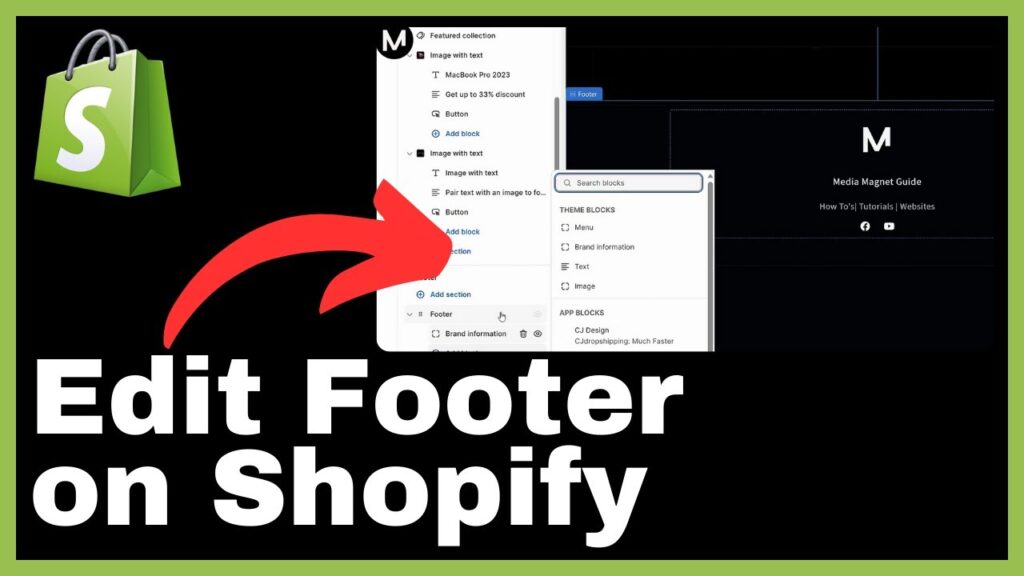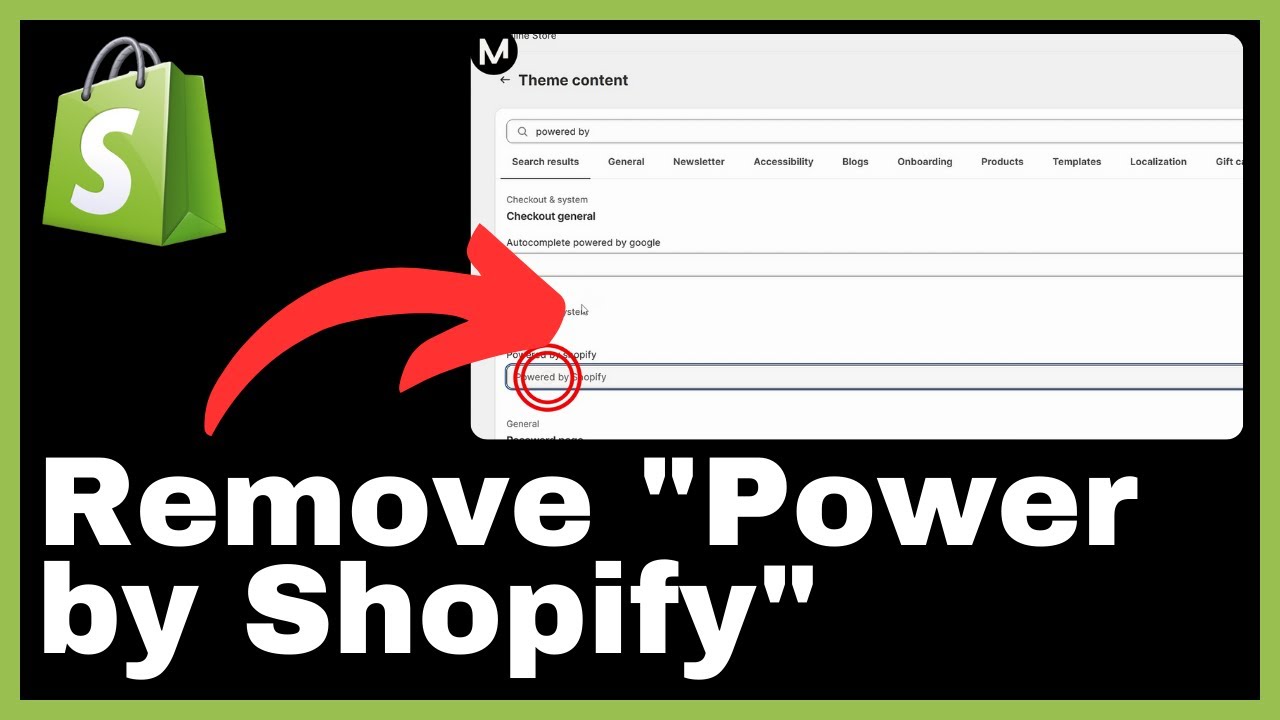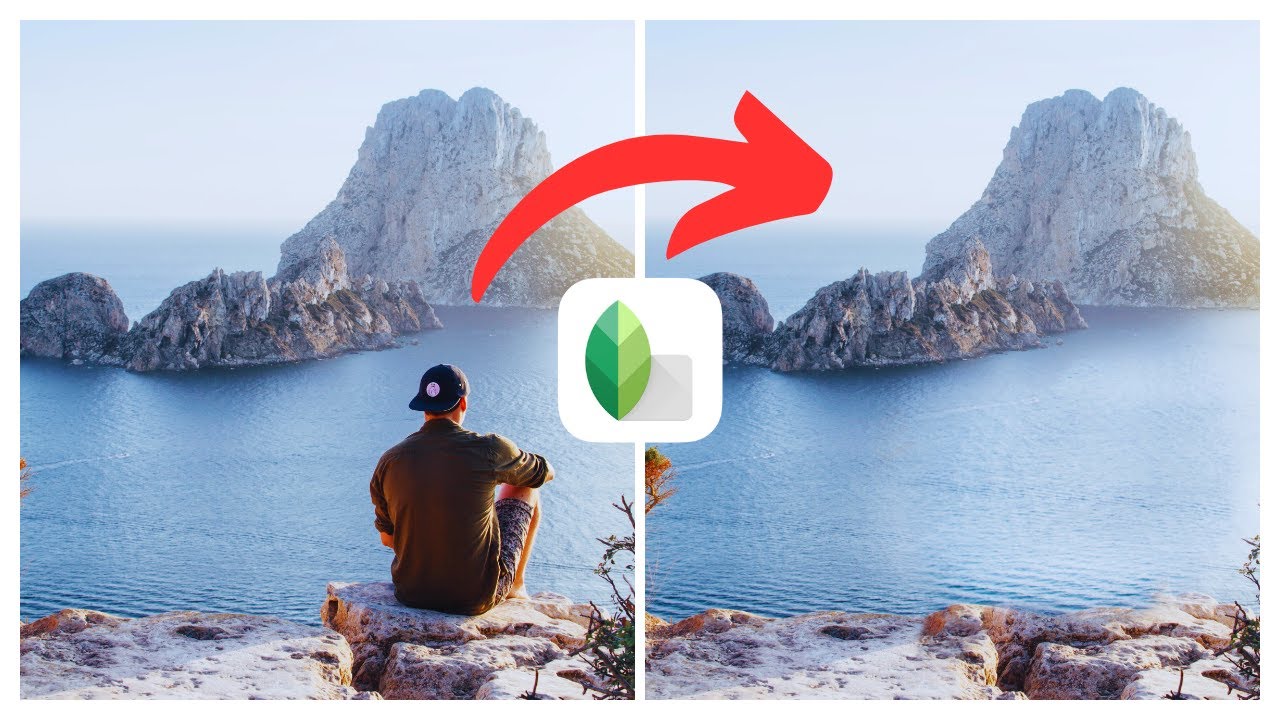“How to Edit Footer on Shopify” is a video tutorial presented by Media Magnet Guide. In this video, you will discover various ways to customize and edit the footer section of your Shopify store, which will enhance navigation and provide important information. The tutorial will guide you step-by-step on how to access the customization area, locate the footer section, and make changes to suit your store’s aesthetics. You will also learn how to add and remove elements such as menus or pictures, and how to save your edits. If you are interested in optimizing your Shopify store, this tutorial is a valuable resource.
Understanding the Importance of Footer on Shopify
The role of footer in navigation
The footer on a Shopify store plays a crucial role in navigation. It provides important information and links that enable visitors to easily find what they are looking for on the website. The footer typically appears at the bottom of the web page and contains various elements such as contact information, links to important pages, Social media icons, and copyright information. By including these elements in the footer, Shopify stores can enhance the user experience and make it easier for customers to navigate through the site.
Importance of footer design
The design of the footer is just as important as its content. A well-designed footer contributes to the overall aesthetic appeal of the website and helps create a professional and cohesive look. It should be visually appealing, easy to read, and consistent with the overall branding of the store. Additionally, a well-designed footer enhances usability by providing clear and easily accessible links to important pages.
Information usually contained in footers
Footers on Shopify stores typically contain a range of information that is important for visitors. Common elements found in footers include:
-
Contact information: This includes the store’s address, phone number, and email address. It allows customers to easily get in touch with the store if they have any questions or concerns.
-
Navigation links: Footers often include links to important pages such as the home page, product categories, about us, FAQ, and customer service.
-
Social media icons: To connect with customers on various social media platforms, stores often include social media icons in the footer. These icons link to the store’s social media accounts, enabling customers to follow and engage with the store online.
-
Privacy policy and terms of service: To ensure transparency and protect customer information, stores often include links to their privacy policy and terms of service in the footer.
-
Copyright information: The footer typically includes copyright information to indicate ownership and protect the store’s intellectual property rights.
-
Payment icons: Footers often display icons of accepted payment methods to instill trust and inform customers about the available payment options.
Having these elements in the footer helps customers easily access important information and navigate the store, ultimately improving the overall user experience and increasing customer satisfaction.
Accessing Your Shopify Store’s Footer
Logging into your Shopify account
To access and edit your Shopify store’s footer, you first need to log into your Shopify account. Go to the Shopify website and click on the “Log in” button located at the top-right corner of the page. Enter your login credentials and click “Log in” to access your account.
Accessing the online store setting
Once you are logged into your Shopify account, you need to navigate to the online store settings. On the left-hand side of the screen, you will find a sidebar with various options. Scroll down and click on the “Online store” option.
Opening the customization area
After clicking on the “Online store” option, a new page will open with different customization settings for your store. Scroll down the page until you find the section related to the footer. This is where you can make changes to the appearance and content of your footer.
Navigating to Your Footer Section
Locating the web page’s footer
To navigate to the footer section, you need to find the footer area on your web page. This is usually located at the bottom of the page. Scroll down the web page until you reach the bottom.
Identifying key elements of the footer area
Once you have located the footer area on your web page, you can start identifying its key elements. Look for contact information, navigation links, social media icons, and any other elements that are currently present in the footer. This will help you understand what needs to be edited or customized.

Changing the Footer Color Scheme
How to access color scheme settings
To change the color scheme of your footer, you need to access the color scheme settings. In the customization area, look for the option to change the color scheme. This is typically located under the footer settings.
Selecting a suitable color scheme
Once you have accessed the color scheme settings, you can choose a suitable color scheme for your footer. Consider the overall branding and design of your store when selecting a color scheme. It should align with your store’s aesthetic and create a visually appealing footer.
Applying a new color scheme on footer
After selecting a color scheme, apply it to your footer by clicking on the “Apply” or “Save” button. This will update the color scheme of the footer, giving it a fresh and customized look.
Adding Blocks to Your Footer
Navigating to the ‘Add Block’ option
To add blocks to your footer, navigate to the “Add Block” option. This is usually located under the footer settings in the customization area. Clicking on this option will open a menu of different elements that can be added to the footer.
Understanding the types of elements that can be added
In the “Add Block” menu, you will find a range of elements that can be added to your footer. These may include menus, images, text blocks, social media icons, newsletter sign-up forms, and more. Take some time to explore the available options and determine which elements would best suit your store’s needs.
Adding a block to the footer area
Once you have decided which element to add, select it from the “Add Block” menu. This will add the chosen block to your footer area. You can then customize the content of the block, change text, add images, or make any other edits as per your preference.
Adding a Menu Section to the Footer
How to add a menu section
To add a menu section to your footer, navigate to the footer settings in the customization area. Look for the option to add a menu and click on it. This will open a menu editor where you can customize the content and appearance of the menu.
Customizing the content of the menu section
In the menu editor, you can customize the content of the menu section for your footer. Add the desired links and labels to the menu, rearrange the order of the items, and customize the styling to match your store’s branding.
Adjusting or removing text in the menu area
If you need to adjust or remove any text in the menu area of your footer, you can do so by editing the menu settings. Click on the menu item you want to edit and make the necessary changes. You can also delete menu items that you no longer need.
Removing Elements from the Footer
Locating the ‘Remove’ option
To remove elements from your footer, locate the “Remove” option for each element. This is usually denoted by a trash can icon or a delete button. Hover over the element you want to remove and click on the “Remove” option.
Properly removing elements
When removing elements from your footer, it is important to do so properly to maintain the overall design and functionality of your footer. Double-check that you are removing the correct element and confirm the removal before proceeding. This will ensure that your footer remains coherent and intact.
Ensuring the consistency of your footer after removal
After removing elements from your footer, take a moment to review the remaining content and ensure that it still maintains consistency. Make any necessary adjustments and rearrange the elements to create a visually appealing and well-organized footer.
Saving Your Footer Changes
Locating the ‘Save’ option
To save your customized footer, locate the “Save” option in the customization area. This is usually located at the top-right corner of the page. Click on the “Save” option to confirm and save your changes.
Saving customized footer
After clicking on the “Save” option, your customized footer will be saved. The changes you made to the content, color scheme, and layout of the footer will now be applied to your Shopify store.
Verifying that changes are saved
To verify that your footer changes have been saved, go to your online store and view it as a visitor would. Check the footer area to see if the changes you made are visible and properly applied. If everything looks as expected, then your changes have been successfully saved.
Testing Your Edited Footer
Navigating to your online store
To test your edited footer, navigate to your online store. Open the web page and browse through it to access different pages and sections. Pay close attention to the footer area as you navigate.
Reviewing the appearance of the new footer
As you go through your online store, review the appearance of the new footer. Check if the color scheme, content, and layout match your customizations. Ensure that the footer is visually appealing and enhances the overall user experience.
Ensuring that all changes are properly applied
While reviewing the appearance of the new footer, make sure that all the changes you made are properly applied. Check that the added blocks, menu sections, and other elements are visible and functioning correctly.
Conclusion
In this article, we have discussed the importance of the footer on a Shopify store and how it contributes to navigation and user experience. We have provided step-by-step instructions on how to access and edit the footer on Shopify, including changing the color scheme, adding blocks, adding a menu section, removing elements, saving changes, and testing the edited footer.
Customizing and editing the footer on your Shopify store is a valuable way to enhance the user experience and promote better navigation. By following the outlined steps, you can create a visually appealing and functional footer that aligns with your store’s branding. Take the time to customize your footer and make it a valuable asset for your Shopify store.
























